
Hypermax® HPPE fiber is knitted into some of the strongest gloves found on the market today. Hypermax® 2.0 HPPE fibers are now capable of delivering twice the cut-resistance levels, while utilizing the same thickness as previous generation HPPE fibers. This is due to the use of UHMWPE fiber, discussed on the previous resource page.
A side-by-side comparison of Hypermax® 1.0 and 2.0 is shown below. Higher cut-resistance levels ensure wearers are protected better and receive one tough, yet comfortable, cut-resistant glove!
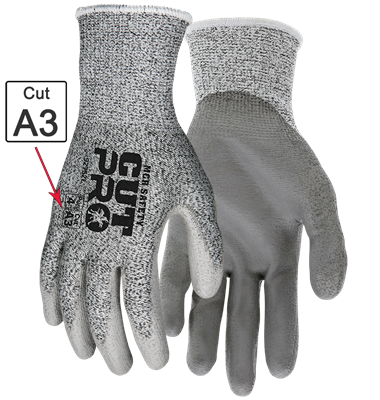
Hypermax® 1.0
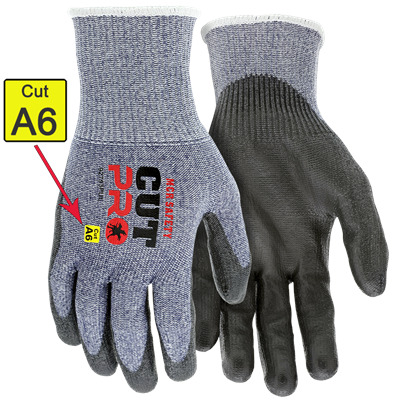
Hypermax® 2.0
With the exact same gauge of material, Hypermax 2.0 achieves double the cut-resistance levels.
The HPPE fibers used in MCR Safety’s gloves represent a long chain of improvement in glove technology and manufacturing techniques that has occurred over the past 40 years. Ever since OSHA was founded in 1970, the quality of PPE technology has significantly improved, most notably with the advent of recent cut-resistant technologies. This has ultimately allowed the manufacturing of PPE that is lighter, more comfortable, and better performing.
When MCR Safety first began manufacturing gloves, leather and cotton were the two primary types of material used. In the 1990s, engineered high-performance fibers began transforming glove manufacturing. At this time, MCR Safety began shifting away from using only leather and cotton materials to utilizing all types of materials. We Protect People, which means we can’t just ignore the ever-changing world of textiles. We strive to be on the leading edge of development so that our customers have the most advanced PPE options available.
Today, in MCR Safety’s direct-owned factories, a variety of fibers are spun into yarns, including nylon, polyester, and DuPont Kevlar. Once the yarn is ready, we then machine knit it into the gloves worn by countless workers worldwide. Here are some images of our spinning and manufacturing operations.
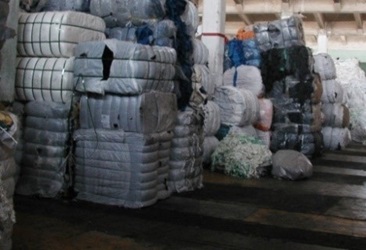
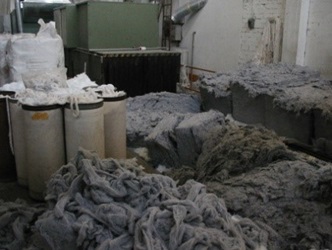
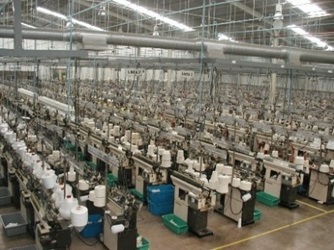
From left to right, you see incoming raw materials, spun yarn, and MCR Safety’s knitting lines at work.
We’re still one of the largest industrial manufacturers of leather gloves and cotton gloves, but we’re steadfast in providing industries with the most advanced cut-resistant gloves, which means we must incorporate the best fibers available. MCR Safety’s very own Hypermax® HPPE fiber is spun before it reaches MCR Safety’s NXG factory and MCR Safety’s Mexico factory. The fiber is taken directly to our knitting machines on the production line and is used to make top-quality safety gloves.
The proprietary makeup of Hypermax® fibers is determined by MCR Safety. We work closely with our textile suppliers to find the perfect blend between cost, comfort, and protection. Our new Hypermax 2.0 fibers are made up of the latest, most advanced gel spun UHWMPE available on the market today.
Here is a breakdown of each Hypermax® fiber, starting with our first generation.
Our 1st generation of HPPE cut-resistant fibers was not the first of its kind on the market. However, with advancements in technology and our years of manufacturing experience, we were able to provide the market with an excellent top-performing and cost-effective alternative to current industry-leading HPPE fibers.
Our toughest, most heavy-duty, UHWMPE cut-resistant fiber
Our 2nd generation of HPPE cut-resistant fibers are now stronger than anything else on the market. Until now, gloves made with MCR Safety’s Hypermax® fibers have only been able to achieve cut-resistant levels in the A3 to A4 range. Now, with UHWMPE fibers, we’re able to keep those cut-resistant scores rising!
Remember, the only way for any glove manufacturer to achieve higher cut-resistant scores is to add lots of reinforcement, like steel and glass. With that said, however, in gloves made with Hypermax® 2.0, it’s the fiber itself that propels the glove into high cut-resistant scores.
Here is a snapshot of MCR Safety’s Cut Pro gloves that utilize Hypermax®. For those of you not familiar with gauge, which measures impact cut scores and comfort levels, we discuss it more below the matrix.
| Hypermax® Version | Cut | Gauge | Shell Color | Palm | Palm Color | Style # |
|---|---|---|---|---|---|---|
| 2.0 | A4 | 13 | Light Blue | PU | Gray | 92713PU |
| 1.0 | A6 | 13 | Navy Blue | PU | Gray | 92793PU |
| 1.0 | A5 | 18 | Navy Blue | PU | Black | 92738PU |
| 1.0 | A4 | 15 | Navy Blue | PU | Black | 92745PU |
| 1.0 | A4 | 15 | Navy Blue | PU | Black | 92753PU |
| 1.0 | A3 | 15 | Navy Blue | PU | Black | 92715PU |
| 1.0 | A3 | 15 | Navy Blue | Nitrile Foam | Black | 92715NF |
| 1.0 | A2 | 18 | Light Blue | Nitrile | Black | 92718NF |
| 1.0 | A9 | 15 | Black | Nitrile Foam | Black | 92735N |
| 1.0 | A7 | 13 | Salt & Pepper | Nitrile/PU | Black | 92743BP |
| 1.0 | A6 | 13 | Salt & Pepper | PU | Gray | 92743PU |
| 1.0 | A6 | 10 | Hi-Vis Lime | Nitrile Foam | Orange | 92720HV |
| 1.0 | A6 | 10 | Black | Nitrile Foam | Black | 92720NF |
| 1.0 | A4 | 18 | Black | Nitrile Foam | Black | 9818NF |
| 1.0 | A4 | 13 | Salt & Pepper | Double Dip Nitrile Foam | Black | 92783 |
| 1.0 | A3 | 15 | White | PU | White | 92773 |
| 1.0 | A3 | 13 | Salt & Pepper | PU | Gray | 92752 |
| 1.0 | A2 | 18 | Green | Nitrile | Black | 96782 |
| 1.0 | A2 | 18 | Light Blue | PU | Gray | 92718PU |
| 1.0 | A2 | 13 | Hi-Vis Lime | Nitrile Foam | Yellow | 92723HV |
What is a gauge? When glove manufacturers, like MCR Safety, throw out a term such as “gauge”, they are referring to the number of knitted stitches per inch in a glove. The higher the gauge number, the tighter the knit, with more stitches per inch than gloves with a smaller gauge number. The gauge simply refers to the number of stitches per inch in a glove. This is important because a thicker gauge may achieve a higher cut-resistant level, but the comfort level is diminished as more stitches per inch results in a stiffer feel. Here is a breakdown of each gauge:
The lower the gauge number, the fewer the stitches, but the thicker the thread. Thick thread usually offers better protection but less dexterity. Thinner thread allows better movement and sense of touch, but usually doesn’t offer as much protection or last as long. From a user standpoint, this language is useful because higher-gauge products are traditionally more comfortable and provide greater dexterity. With advanced yarns being introduced, like Hypermax® UHWMPE fibers, 18 -Gauge gloves are achieving higher and higher cut-resistant levels. The recent 92793PU glove is 18G and achieves an A6 cut level! This would have been unthinkable just 3-4 years ago. Only a 10 to 13 gauge glove would have achieved that score. Just keep in mind, heavier gauge gloves are not as expensive and offer other benefits, other than just feel. With our aramid fibers, 7 gauge gloves are an excellent resource for heat protection.
In short, advanced fibers have allowed us to "push the needle" and introduce cut-resistant gloves in a higher gauge.
As you can see in the matrix below, Hypermax® earns top scores in almost every category. Compared to other HPPE fabrics, Hypermax® provides equal performance at a lower cost.
| Material | Cut Resistance | Abrasion Resistance | Heat Resistance | Dexterity | Cost | Coolness | MCR Style |
|---|---|---|---|---|---|---|---|
| Alycore® | 5 | - | 1 | 1 | 1 | PD2905A | |
| Dyneema® Diamond Tech HPPE | 3 | 4 | - | 4 | 1 | 4 | 9676 |
| Dyneema® Diamond Tech HPPE / Steel Blend | 4 | 4 | - | 3 | 1 | 4 | 9672DT5PU |
| Hypermax® 1.0 HPPE | 3 | 4 | - | 4 | 5 | 3 | 92743PU |
| Hypermax® 2.0 HPPE | 4 | 4 | - | 3 | 4 | 3 | 92793PU |
| Kelvar® | 3 | 2 | 4 | 3 | 2 | 2 | 9375 |
| Kevlar® / Steel Blend | 4 | 2 | 2 | 2 | 3 | 2 | 9399 |
| Spectra/Fiber Glass Reinforced | 4 | 2 | - | 2 | 2 | 1 | 9346D |
| Steelcore® II Synthetic/Steel blend | 4 | 3 | - | 2 | 2 | 1 | 9356 |
| Key | Performance |
|---|---|
| 5 | Superb |
| 4 | Excellent |
| 3 | Good |
| 2 | Average |
| 1 | Minimal |
| - | Not Recommended |
Well, that is HPPE in a (rather large) nutshell. We hope the information we have provided has helped make you an informed purchaser of PPE. Our goal is to make the most advanced gloves on the market and to protect people from the hazards on their job sites.
